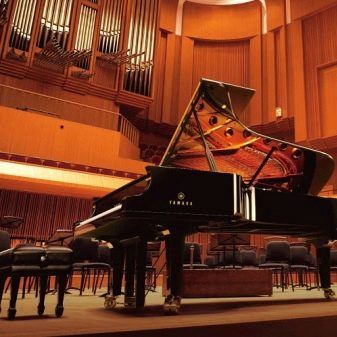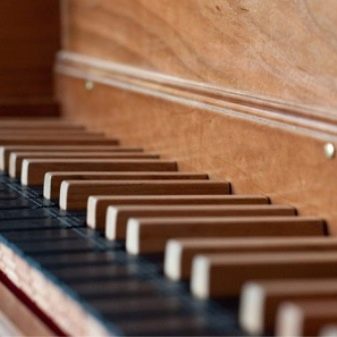Harpsichord: description and types of instrument
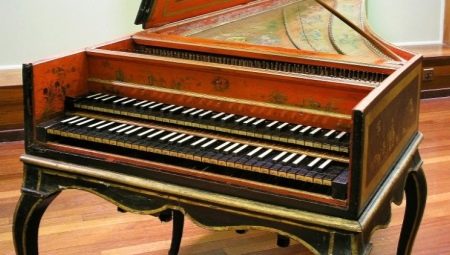
People associated with the world of music have probably heard of such an unusual instrument as the harpsichord. It is not very popular these days, but its sound really captivates music lovers. We will try to tell you more about what the harpsichord is and how it differs from other instruments.
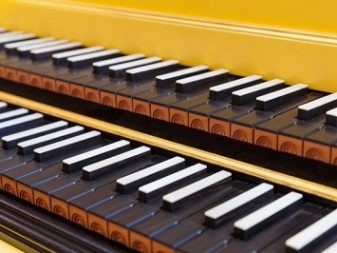
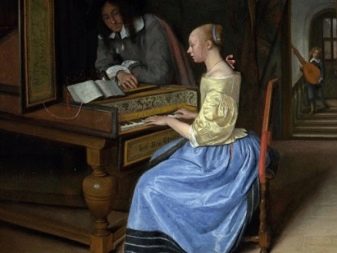
general description
The harpsichord is one of the most ancient instruments; it appeared at the turn of the 15th-16th centuries. The principle of its operation is not simple, and the sound is very peculiar. Therefore, it is possible to evaluate the melody produced by its keys only after listening to several compositions. So, the classical harpsichord is an ancient musical instrument. It has been used both in orchestra and solo. It is considered the predecessor of the piano. Initially it had a quadrangular configuration, in the 17th century it took on a triangular wing-like shape.
Most of the models have one or two keyboards for variability of sound color and expansion of treble. The range goes up to 5 octaves. The sound is produced by plucking the strings with a rod - originally it was made from a bird's feather, nowadays plastic is used for this.
The temporality of the sound and its strength do not depend in any way on the way you strike the keys.
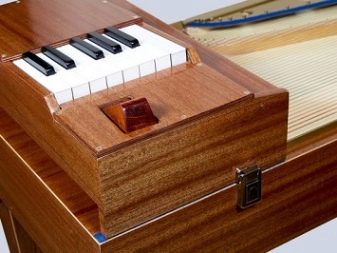
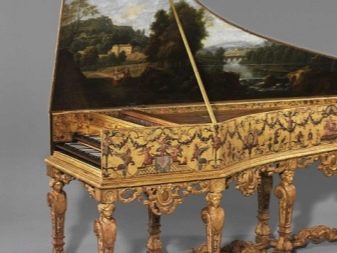
The acoustic parameter of the harpsichord is low - 15-20 dB lower than the piano one. Because of this, problems may arise when recording it. If the recording level is at its maximum, then at normal listening volume it will seem rumbling and grating. And if the recording level is lowered, then when listening, you may notice the extraneous noise of the studio.To tune away from them, you have to cut the low frequencies to 150-200 hertz, since the harpsichord does not reproduce sounds below this level, and its bass notes do not provide the main key.
In recording studios, a parametric equalizer is used to make the harpsichord sound more authentic. In general, the harpsichord responds quite well to any frequency correction. The bulk of the instrument's overtones are within the region of the greatest human auditory sensitivity, so the harpsichord is easily distinguishable in any orchestra. Nowadays, the harpsichord can be heard mainly in specialized places - in conservatories, philharmonic societies and at concert venues.
Such a tool is a rarity. You need to play it with great care and utmost care, since outdated mechanisms can break if handled carelessly.
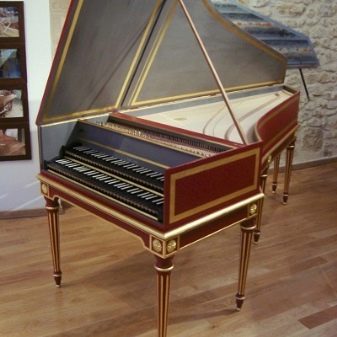
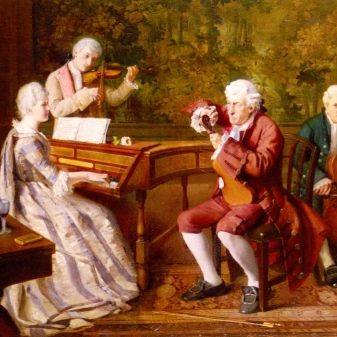
How did it appear?
The earliest mention of the harpsichord dates back to 1397, and the very first of all the images discovered was found in a sacred temple in the town of Minden and dated to 1425. It was used as an orchestral instrument until the end of the 18th century, for a little longer it accompanied recitative in classical operas. Already at the beginning of the 19th century, this string instrument was almost completely out of use. For a long time, the harpsichord by Jerome from 1521 was considered the oldest harpsichord that has come down to modern times. But not so long ago, an older instrument was found, the date of its manufacture dates back to 1515, and the authorship belongs to Vincentius of Livigimeno.
The harpsichords of the XIV century have not survived to this day. One can get an idea of their design only from the images - at that time they were a short, but at the same time dimensional tool. Most of the harpsichords that have survived to this day were made in Venice in the 18th century. All of them were distinguished by the exceptional grace of forms and had 8 registers. The body was machined from cypress, and the sound was more distinct and choppy than the later Flemish-made models.
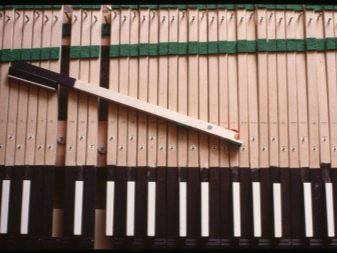
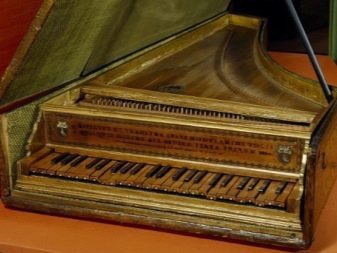
On the territory of Europe, the city of Antwerp became the center for the creation of the harpsichord; members of the Ruckers family achieved particular success in this matter. Their harpsichords were heavier than the Flemish ones, and their strings were longer. It was they who began to produce the harpsichord with a couple of manuals. Later models of German, English and French production of the 18th century combine the main features of Dutch and Italian products.
French double-manual harpsichords made of hazel have survived to this day. At the end of the 17th century, harpsichords began to be made in France using the technology of the Rooker company. The most famous masters of that period were considered Blanchet. In 18th century England, the artisans Shudi and Kirkman became famous in this field. They came up with the idea of making the harpsichord from oak, faced with plywood, they were distinguished by a richer sound timbre.
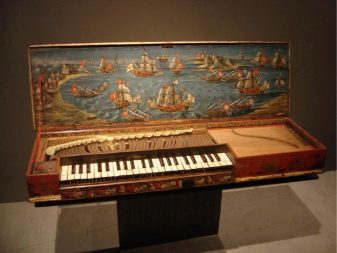
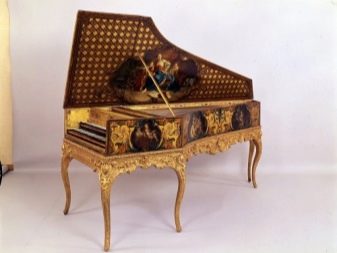
In the Middle Ages, the harpsichord was recognized as an aristocratic instrument. He was sure to be present in the salons of the most distinguished people of the Old World. It was made from expensive types of wood, and the keys were covered with turtle shell plates, inlaid with precious stones and decorated with mother-of-pearl. At first it was located on the table, later the craftsmen added beautiful legs. The role of sitting behind him was assigned to the conductor. This person was supposed to play the instrument with one hand and guide the musicians with the other.
By the way, at that time, instruments became widespread, in which the upper keyboard was made in white, and the lower one in black. Historians believe that this design was associated with the gallant style that dominated culture and art at that time.
It was believed that the white hands of performers looked especially stylish and sophisticated on a black keyboard.
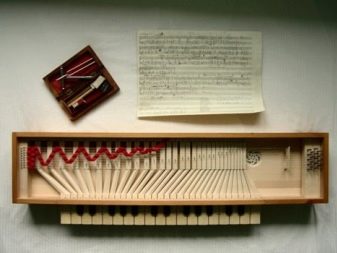
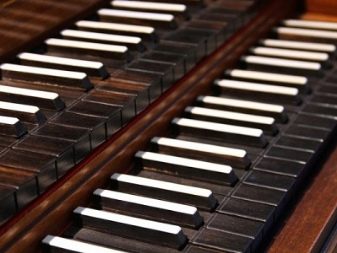
Since the middle of the 18th century, the harpsichord has gradually been replaced from the musical sphere by the pianoforte and piano. Around 1809, the Kirkman Company introduced their last harpsichord. Only 9 decades later, the instrument was revived by the master A. Dolmech, who opened his production facilities in the cities of Boston and Paris. A little later, the release of a harpsichord was launched with a metal frame holding tightly stretched thick strings. By the way, it was on such instruments that Wanda Landowska later taught many famous harpsichordists. But the craftsmen from Boston F. Hubbard and W. Dyde decided to return to the old models.
Although the harpsichord never returned to its former popularity, some musicians still use it to impress the public. So, in Soviet cinema in 1966, the film "When the Harpsichord Plays" was released - it has a storyline directly related to this ancient instrument. But he received the greatest fame among fans of the TV series "Hannibal". The main villain of this epic was very fond of playing the harpsichord and noted that its sound was distinguished by special power and strength.
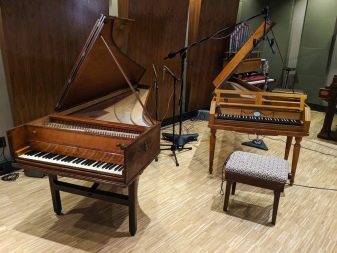
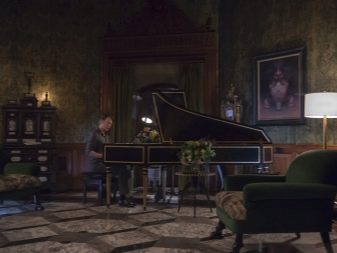
In the Middle Ages, the "cat's harpsichord" was very popular at the royal court. They were a device that included a rectangular box and a keyboard. Several blocks were made out in a box, and an adult cat was placed in them. Previously, the pets passed "auditions" - they were pulled with force by the tail, and then the pets were assigned by voices.
During the concert, the tails of the animals were attached under the keys. At the moment of pressing, sharp needles stuck into the unfortunate animals - they screamed strongly, and due to this, a melody appeared. It was such a harpsichord that Peter the Great ordered to create his famous Cabinet of Curiosities.
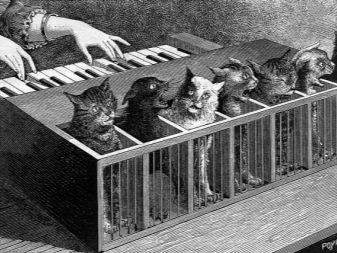
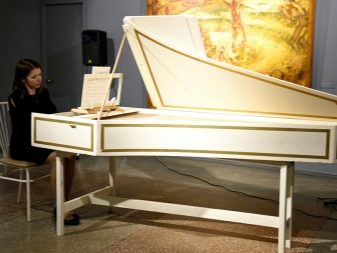
The device of modern instruments
The shape of the modern harpsichord is triangular and elongated. The strings are placed horizontally parallel to the keyboard. At the end of the key, a jumper is provided, on it there is a langetta, where a small tongue is inserted, in modern instruments it is made of plastic. There is a damper a little further; it is made of leather or felt. At the moment of drowning the key, the jumper rises, and the plectrum instantly pinches the string attached to it. If you then release this key, a device is released, thanks to which the plectrum will return under the string without the need to pluck again. Vibration from the string is effectively damped by a damper.
To change the timbre and sound power, switches are used; they are of the hand and foot types. Smooth speed change is not provided by the structure of the harpsichord. In the 15th century, the range of the instrument included three octaves, but already in the 16th it increased to 4, and in the 18th it was already 5. Standard 18th century German and Flemish harpsichords include two keyboards, a pair of 8 string sets and one 4 string set (they sound an octave higher). The design also includes a keyboard copulation mechanism.
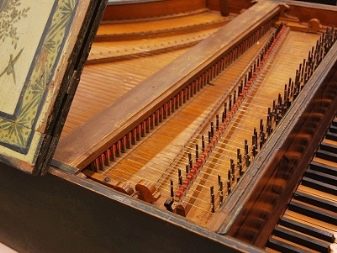
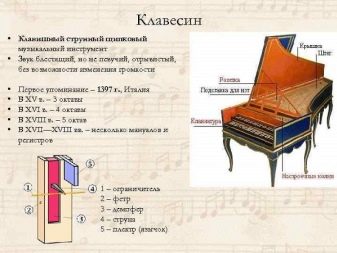
Sound
The sound of a classical harpsichord is not very different from the music played on any other musical instrument. This is due to its design features - each string has its own special sound. People with a fine ear and musical education are well aware that when playing the piano, some chords that require special permission (for example, dominant chords and terzquart chords) sound tense. On the harpsichord, they become even more dissonant, since each key corresponds to a traditional scale, but at the same time produces a specific unique sound.
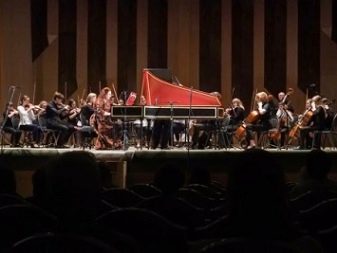
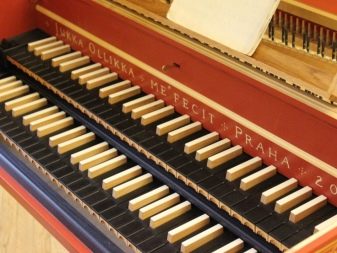
Varieties
In the Baroque era, keyboard instruments with a plucked sound were especially popular.This is how the harpsichord came into fashion in European countries, its strings were stretched horizontally. Later it was modified and modified more than once.
Lute
Most of the harpsichords have a characteristic nasal timbre - the so-called lute sound. Sound production is reminiscent of pizzicato played on bowed instruments. Such a harpsichord does not have a separate row of strings.
When you switch the lever, the sound is slightly muffled using a specialized mechanism based on pieces of leather or dense felt.
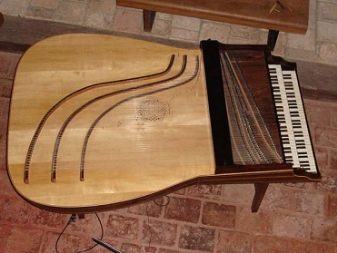
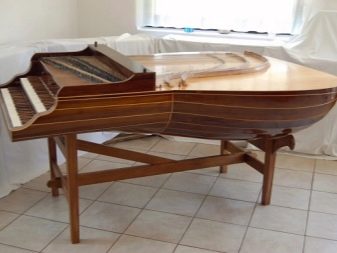
Spinet
Italian masters created a spinet, it had one manual. The strings were not pulled straight here, but diagonally (from left to right). At the same time, the strings themselves had different lengths, so the body visually resembled a miniature grand piano. The dimensions of such a harpsichord are smaller than that of a lute. The number of octaves varies from 2 to 4. Some craftsmen made miniature spinets the size of a casket - they served more like toys for children.
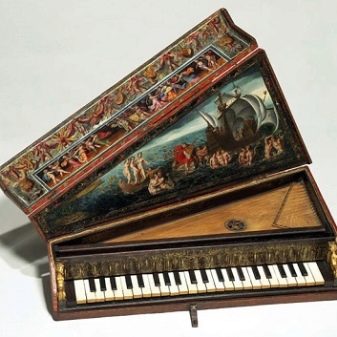
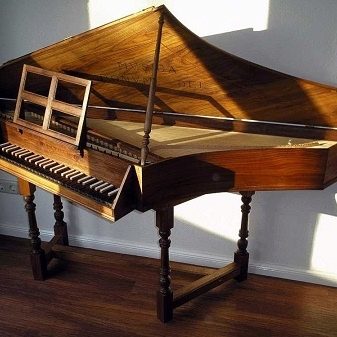
Virginal
The English version of the harpsichord, although it became widespread not only in Britain, but also in Holland. A characteristic feature of the virginal is that the strings are pulled parallel to the keyboard. Thanks to this, the tool has acquired a rectangular shape.
There is only one manual here. The range is limited to three octaves. In England there was even a whole school of composers who wrote works especially for this harpsichord - William Bird, Orlando Gibbons and John Bull.
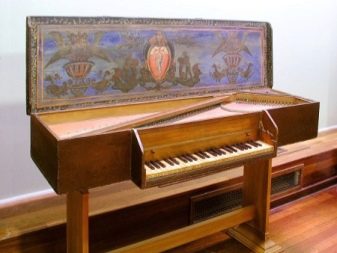
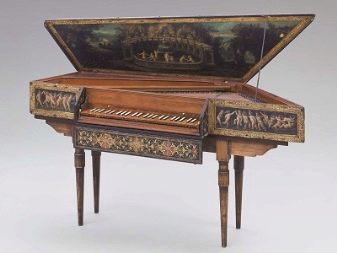
Muselar
This model provides for the location of the keyboard along the long side of the case. This is how it differs from traditional models. Most often it was placed in the center or on the left. The tonality of the sound of such an instrument was different from that of a lute.
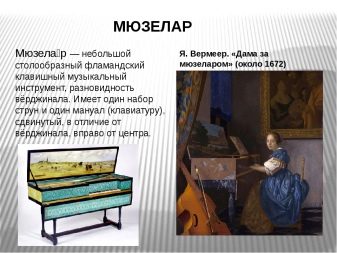
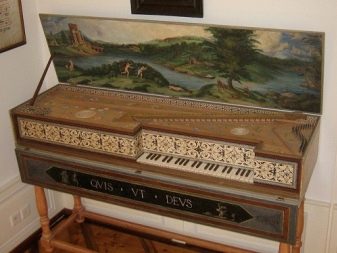
Keyboard
Another kind of old keyboard instrument. In it, the strings are arranged vertically relative to the body.
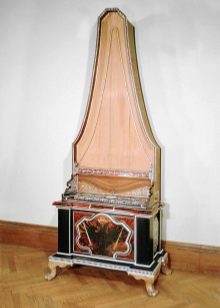
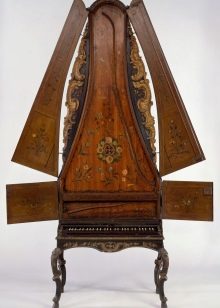
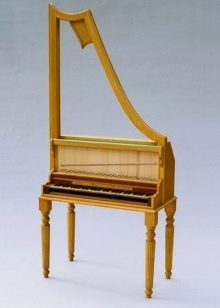
How is it different from a piano?
The main distinguishing feature of this instrument is its unusual keyboard. Everyone knows what a piano keyboard looks like. At the harpsichord, it looked the same, only it was not covered with enamel. Initially, these were simple wooden planks, well polished. A similar type of keyboard and sound-producing mechanism was used before by the creators of the piano. We can say that the harpsichord is the original version of the piano, which was later somewhat modernized and improved.
Over the course of several centuries, the design of a musical instrument has changed, in particular, the way the strings are attached to the keys has been adjusted. Today the harpsichord is not so popular, some people do not know about its existence at all. However, the specific sound peculiar to this instrument is quite interesting.
The tunes played on the harpsichord are truly mesmerizing. Therefore, all music lovers should definitely find recordings of works performed on this unusual string instrument and get acquainted with them.
